If you were to gather a group of National Park Rangers who work on Alcatraz and ask them to write down the most common questions they receive, you could probably nail them down to about five (give or take). Where is Al Capone’s cell? Where was the Birdman’s cell? Where’s the restroom? Was Whitey Bulger really on Alcatraz? And… The big one… Do you think they really made it (referring to the Anglin Brothers escape)?
The Anglin Brothers Escape is one of the most infamous disappearances in American history. Their alleged escape from Alcatraz in 1975 has long baffled authorities. The brothers and their uncles have been missing since. But now, a film has helped shed light on the case. HISTORY special, “Alcatraz: Search for the Truth,” aired on History Channel in 2015. The film showed a photograph of the brothers, allegedly inked by Clarence Anglin, that his family had received three years following their escape.
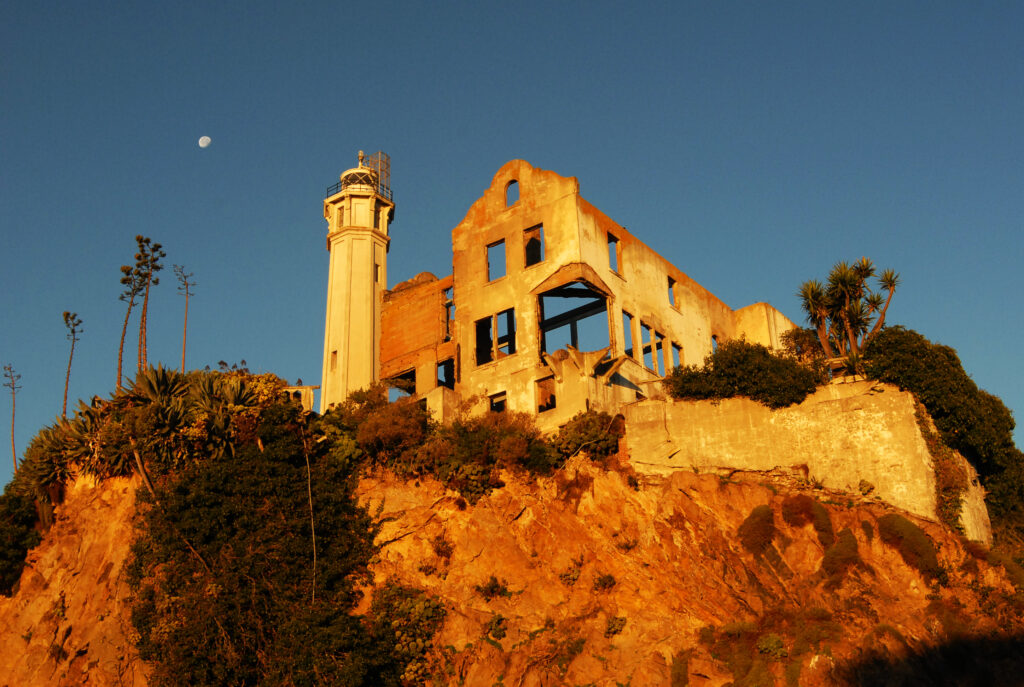 The escape was reportedly possible due to the Anglins’ skill at swimming. Because they lived in Tampa Bay, the brothers were used to swimming in turbulent waters. They knew the nature of ocean currents and the conditions they faced in open water. The key to their success was knowing the right time to enter the water. Early entry would have seen them swept out to sea, but when they went into the water at eleven in the night, they had a better chance of making it to land.
The escape was reportedly possible due to the Anglins’ skill at swimming. Because they lived in Tampa Bay, the brothers were used to swimming in turbulent waters. They knew the nature of ocean currents and the conditions they faced in open water. The key to their success was knowing the right time to enter the water. Early entry would have seen them swept out to sea, but when they went into the water at eleven in the night, they had a better chance of making it to land.
While there were other prisoners who disappeared following their break from “The Rock”, it is this 1962 escape that captured the imaginations of the public. People don’t need to call them by name…whenever the question comes up, it’s clear that “they” is the tacit reference to Frank Morris and brothers John & Clarence Anglin and their epic great escape from Alcatraz. Clint Eastwood can take a lot of credit for making the men folk heroes as he brought the story to life in his 1978 epic film Escape from Alcatraz.
Eastwood, who portrayed Frank Morris in the film, conveyed a riveting (but Hollywood style) story that still intrigues all of us more than a half century after the dozen escape artists disappeared under the cover of night. They have become legendary figures, and it is their story that helps draw more than a million visitors each year to see firsthand the scene of the crime. But what really happened? Did they survive? Did they drown in the chilly waters of San Francisco Bay? What is the real evidence? Why is there such a debate? Will we ever know the truth? These are the questions that have been debated.
Frank Morris, along with the Anglin Brothers, had criminal pasts that stretched way back into their youths. Petty crimes ultimately progressed to bank robbery, and all of them would land a 5’x9′ cell on Alcatraz for their infamous status as elite escape artists.
During its tenure as a federal prison, Alcatraz was hyped as the most secure federal prison ever built and was a powerful symbol of the government’s war on crime. The escape had been in planning for months, and it involved crafting lifejackets and a raft stitched and glued together from more than fifty raincoats. Also, reminiscent of Willie Sutton’s famed 1940s escape from Eastern State Penitentiary, the convicts fabricated life-like dummy heads for use as decoys in their beds. It was an epic ruse as it fooled the guards who made frequent patrols past their cells for more than a month as the trio took turns working on top of the cellblock.
The Anglin Brothers were convicted felons who broke out of Alcatraz Prison in 1962. They were convicts who had committed a series of bank robberies. Their crimes eventually landed them in prisons all across the south. In one instance, they were transferred to Alcatraz after committing a bank robbery. One of their first attempts to escape ended in failure.
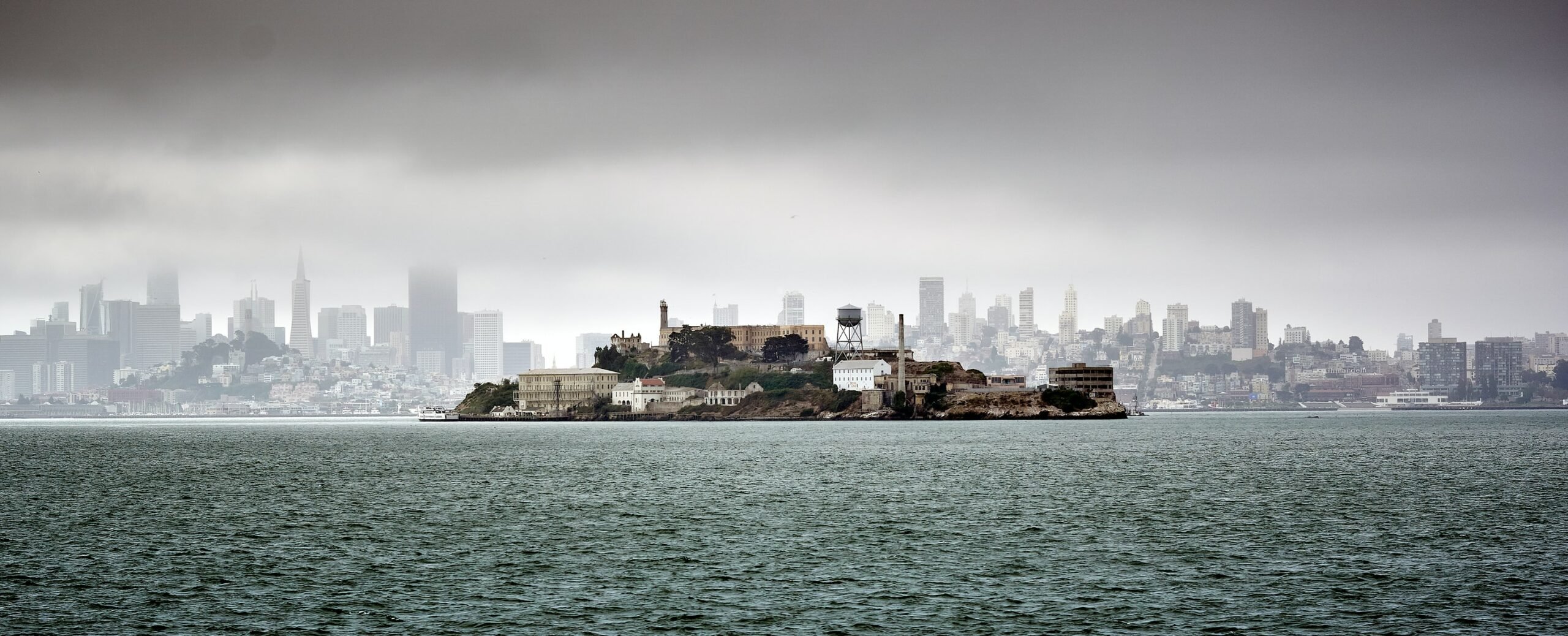
After this failed escape, convicted bank robbers Morris, Clarence, and John Anglin were held in a maximum-security prison. For their new escape plan, the brothers constructed an inflated vest and a raft using raincoats stolen from local barbers. They had to elude security guards for months before they were able to evade detection. A week later, the prison was put on lockdown as a result of their escape.
On the morning of June 12, 1962, Correctional Officer Bill Long started his day with the normal routine of enjoying breakfast with his wife, Jean, and years later, the only shared memory both had of the morning was Bill complaining about the AM radio station that Jean listened to playing Tommy Roe’s hit single “Sheila” over and over again. Carrying his steel thermos of fresh coffee, he made the hike up the steep hill along with other straggling officers about to begin their shift.
After a routine briefing, the new’t show up at the desk as promptly as the others. Bill remembered Sarge in a panic, “Bartlett was coming in my direction hot-foot’n it, and he’s about 20 feet away and he starts yelling Bill, Bill, Bill! I got a guy here who won’t get up for the count! So, I went up to B-150 which was John Anglin’s cell. I went up to the bars, knelt down, I reached in with my left hand to tap him on the head and it felt like it crumbled and the head flopped off onto the floor. People who were observing me said that I jumped back about four feet. That’s when all hell broke loose and the captain started ringing the bell…”
Allen West, who also was also principal in the escape attempt, claimed he had failed to widen the space enough to get through in time to escape with the others. Some theorized he chickened out as he thought the odds didn’t weigh in their favor, while others felt his partners abandoned him and left him to take the rap. He was laboriously interrogated by the FBI and Bureau of Prison officials, giving them a detailed account and seeding the claim he had planned the entire plot.
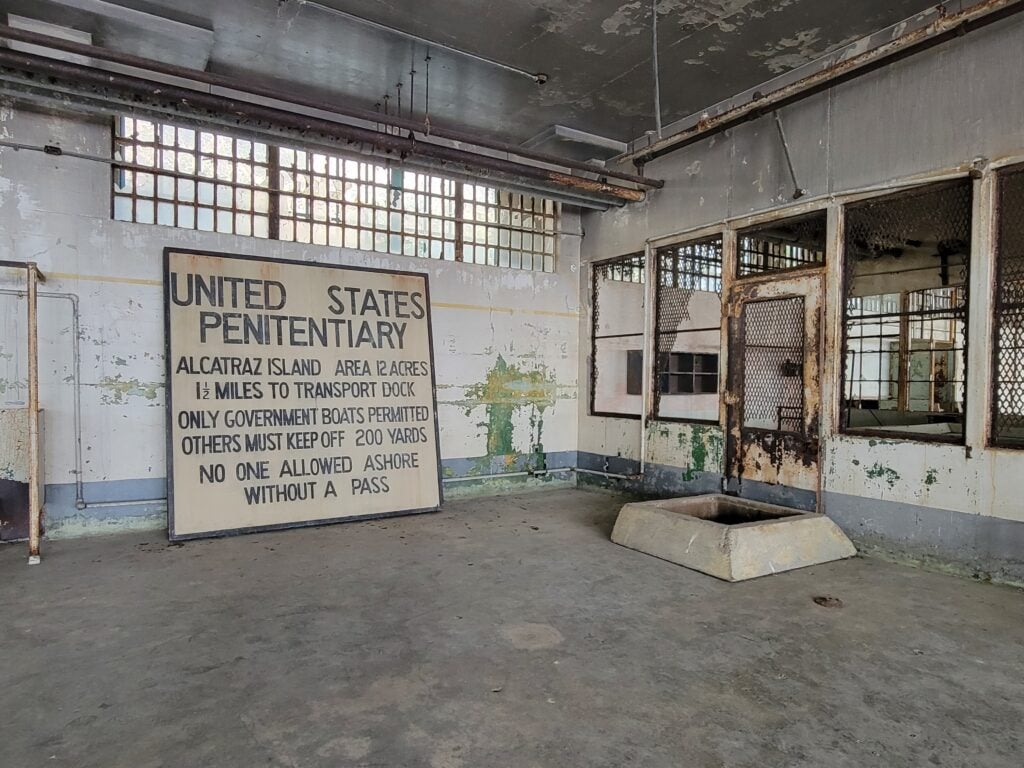 The story of the escape and the mechanics of the plot is well known, but deciphering the evidence is what has baffled investigators for decades. So, what are the theories, and how do they weigh against each other? Most often the right answer in a conspiracy is the simplest. The magic of the mystery is that for every single piece of evidence, or a theory that suggests the escapees died in their attempt, is another that is of equal weight in making a compelling case for survival. One can’t definitively prove or provide ample evidence on either side of the debate to close the case. A lack of evidence doesn’t prove they died, nor does it prove they lived. There remains a firm division of those who believe they lived and those who believe they died. This includes investigators from the US Marshal Service, FBI, Park Rangers and Interpreters from the Golden Gate National Park Conservancy who provide a balance of theories to visitors who make the pilgrimage to see the crime scene firsthand. Whitey Bulger, the famed crime mogul who was serving time on Alcatraz for bank robbery and a near successful escape from the Federal Prison in Atlanta, believes they survived since he himself had been on the run from the FBI for sixteen years and was finally captured living in a beachside community of Santa Monica, California. He used the very same methods that they had discussed on Alcatraz to evade capture for more than a decade. He later commented that if he’d “fled the country like the trio,” he would have never been found.
The story of the escape and the mechanics of the plot is well known, but deciphering the evidence is what has baffled investigators for decades. So, what are the theories, and how do they weigh against each other? Most often the right answer in a conspiracy is the simplest. The magic of the mystery is that for every single piece of evidence, or a theory that suggests the escapees died in their attempt, is another that is of equal weight in making a compelling case for survival. One can’t definitively prove or provide ample evidence on either side of the debate to close the case. A lack of evidence doesn’t prove they died, nor does it prove they lived. There remains a firm division of those who believe they lived and those who believe they died. This includes investigators from the US Marshal Service, FBI, Park Rangers and Interpreters from the Golden Gate National Park Conservancy who provide a balance of theories to visitors who make the pilgrimage to see the crime scene firsthand. Whitey Bulger, the famed crime mogul who was serving time on Alcatraz for bank robbery and a near successful escape from the Federal Prison in Atlanta, believes they survived since he himself had been on the run from the FBI for sixteen years and was finally captured living in a beachside community of Santa Monica, California. He used the very same methods that they had discussed on Alcatraz to evade capture for more than a decade. He later commented that if he’d “fled the country like the trio,” he would have never been found.
There are two main theories as to how they made it off the island. The first and most prevalent theory is that once they hit the water’s edge, they inflated their raft and lifejackets, then paddled hard towards Angel Island. This was the plan that Allen West recounted to officials and the only theory that aligns with the “physical” evidence from the escape. A fellow prisoner, Bob Schibline asserted that he had been providing Clarence Anglin tide tables torn from a Chronicle page that he’d scrapped from a waste basket left behind by guards. Why is this so important? If true, it means the escapees had at least some awareness of the tide conditions. The Anglin Brothers also grew up on Tampa Bay, and the family vehemently affirmed that the brothers were adept at swimming turbulent waters. Though generally warmer waters, even during the winter months, they understood the currents and general conditions of swimming in open water and the nature of swift ocean currents. Their success was predicated on several factors, but most prominent was the time they’d entered the water. Too early and they would have been swept to sea, but if they left between 11:00 PM and 12:00 AM, they could have possibly made to land and survived. If they timed it using the tidal charts and entered the water during that brief window between the transitions of tides, they could have survived without much effort.
West told officials that they had planned to make it to Angel Island and then cross the small strait over to Marin. In at least one account, he claimed they had talked about stealing clothes and then stealing a car to drive straight to Mexico. In fact, another convict, Darwin Coon, indicated that they had planned this part of the scheme in meticulous detail. If they were pinned down and couldn’t progress to steal a car, they’d find a Sears-type store, enter one-by-one and hide in a clothing carousel until the store closed. They’d steal clothes and then find a car and drive it to an airport’s long-term parking lot. They’d leave the stolen car and take another vehicle in hopes that it could be several days before the car was discovered missing. It was roughly only 500 miles from San Francisco to the Mexican border, so in theory, they could make the drive before the first alarms sounded and they wouldn’t be discovered missing until deep past the border.
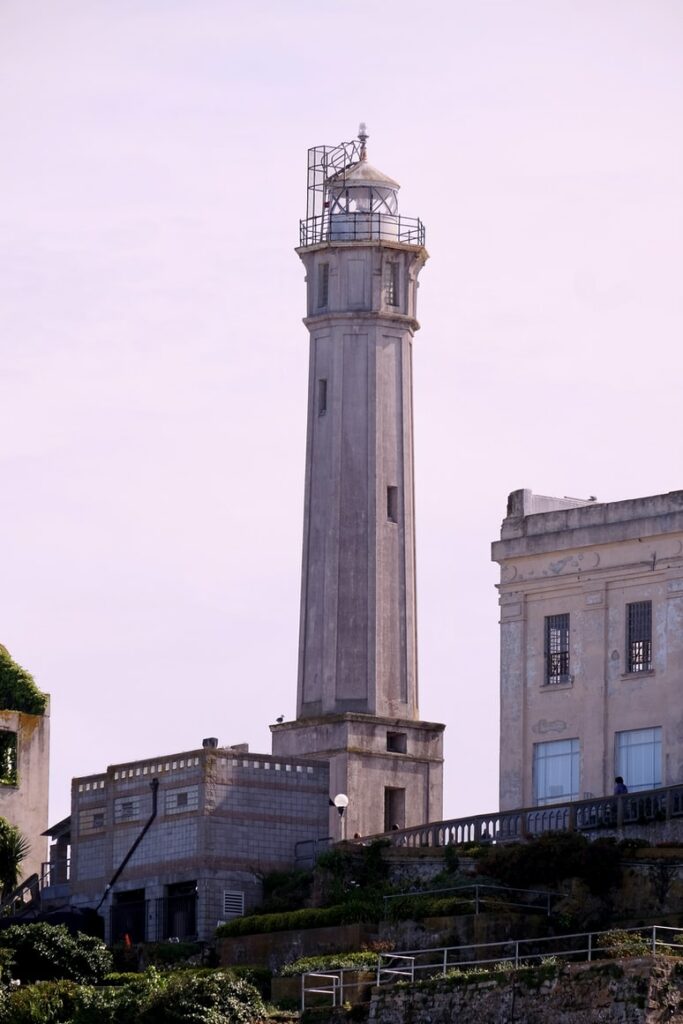 There were also other bits of evidence that seemed to suggest that maybe they made it to land as this scenario played out. In a teletype APB bulletin sent to the Marin County Sheriff’s Office on the morning of June 12th to CHP and local police offices, FBI Agent Frank Price wrote “RAFT BELIEVED USED BY THE ESCAPEES LOCATED ON ANGEL ISLAND.” The following day, the FBI sent another all-points bulletin that three men matching the escapees’ descriptions were reported to be in the Riverbank, California area, driving a blue 1955 Chevrolet “that might be identical to the one stolen in the Marin County area.” What’s important is that while people would have had knowledge of the escape and their physical descriptions, the stolen vehicle had been kept confidential from the public. Purely a coincidence? It is certainly possible. The second theory first brought to the officials by another convict and conspirator, Woodrow Wilson Gainey, and thirty years later recounted by a childhood friend Fred Brizzi. These men suggested they had planned to make their escape from the dock area, using a long industrial electrical cord by tying it to the cowling frame near the prop and rudder on the island ferry, then they would hitch a ride to the mainland. Darwin Coon had also claimed he heard them debate a similar scheme. In fact, in Darwin’s account, he claimed they planned to use a small segment of steel pipe large enough to thread the cord through. The purpose was to weigh down the cable low enough into the water to keep it from getting fowled in the propeller while in reverse. This theory claimed a boat awaited them near the St. Francis Yacht Club and sped them to a distant harbor for safe passage out of San Francisco. After hearing of the escape, Robert Checchi, a reputable San Francisco Police Officer, contacted the FBI reporting that he had witnessed a suspicious boat in this very area and remained convinced he’d witnessed activities linked to the escape. The Anglins’ childhood friend, Fred Brizzi, had an even more compelling account. In 1992, Brizzi (a convicted drug trafficker) approached the family alleging he was there to make good on a promise he’d made to the brothers. His claim was that while smuggling drugs into Brazil in 1975, he’d spent time with both brothers. As proof, Brizzi provided the family a photograph he claimed he’d taken of the brothers, and in later years, at least three expert forensic analysts gave their opinions stating the photo was in high likelihood the escapees. Art Roderick, the United States Marshal who led the investigation for more than two decades, confirmed that they had received leads of the escapees living in South America, though they were never located. They were dismissed as every lead eventually turned cold. But it was possible. It had been proven that South America, especially Brazil, was a safe haven for those seeking anonymity. As a matter of fact, in the post-
There were also other bits of evidence that seemed to suggest that maybe they made it to land as this scenario played out. In a teletype APB bulletin sent to the Marin County Sheriff’s Office on the morning of June 12th to CHP and local police offices, FBI Agent Frank Price wrote “RAFT BELIEVED USED BY THE ESCAPEES LOCATED ON ANGEL ISLAND.” The following day, the FBI sent another all-points bulletin that three men matching the escapees’ descriptions were reported to be in the Riverbank, California area, driving a blue 1955 Chevrolet “that might be identical to the one stolen in the Marin County area.” What’s important is that while people would have had knowledge of the escape and their physical descriptions, the stolen vehicle had been kept confidential from the public. Purely a coincidence? It is certainly possible. The second theory first brought to the officials by another convict and conspirator, Woodrow Wilson Gainey, and thirty years later recounted by a childhood friend Fred Brizzi. These men suggested they had planned to make their escape from the dock area, using a long industrial electrical cord by tying it to the cowling frame near the prop and rudder on the island ferry, then they would hitch a ride to the mainland. Darwin Coon had also claimed he heard them debate a similar scheme. In fact, in Darwin’s account, he claimed they planned to use a small segment of steel pipe large enough to thread the cord through. The purpose was to weigh down the cable low enough into the water to keep it from getting fowled in the propeller while in reverse. This theory claimed a boat awaited them near the St. Francis Yacht Club and sped them to a distant harbor for safe passage out of San Francisco. After hearing of the escape, Robert Checchi, a reputable San Francisco Police Officer, contacted the FBI reporting that he had witnessed a suspicious boat in this very area and remained convinced he’d witnessed activities linked to the escape. The Anglins’ childhood friend, Fred Brizzi, had an even more compelling account. In 1992, Brizzi (a convicted drug trafficker) approached the family alleging he was there to make good on a promise he’d made to the brothers. His claim was that while smuggling drugs into Brazil in 1975, he’d spent time with both brothers. As proof, Brizzi provided the family a photograph he claimed he’d taken of the brothers, and in later years, at least three expert forensic analysts gave their opinions stating the photo was in high likelihood the escapees. Art Roderick, the United States Marshal who led the investigation for more than two decades, confirmed that they had received leads of the escapees living in South America, though they were never located. They were dismissed as every lead eventually turned cold. But it was possible. It had been proven that South America, especially Brazil, was a safe haven for those seeking anonymity. As a matter of fact, in the post-
The mother of John and Clarence reportedly received Christmas cards each year following the escape and one of their other brothers abruptly moved to Texas, and on his deathbed, indicated he had spent time with the boys and claimed they had made it. The US Marshal Service has formally stated they did not believe the men in the photo are the escapees despite their likeness.
Another mystery centered on Alfred Anglin, the third brother involved in the same bank heist. He avoided Alcatraz because he had a clean record of conduct. Alfred was serving his state-imposed sentence (in a state prison) when, on January 11, 1964, he attempted to escape and became entangled in a high-power line and was electrocuted. This perplexed both family and officials. His case file showed him eligible for parole and a committee hearing was only weeks away. His cellmate would later claim that Alfred received a message from his brothers and that he knew where they were hiding. In letters to the family, prison officials indicated he was a model inmate, and they couldn’t figure out why he’d made such a desperate dash for freedom when his release seemed to be only a short time away. This was also confirmed by his brother Robert who had visited him just prior. Robert later claimed that Alfred hinted he knew where the brothers were, and it was highly probable that this was the motivating factor behind his escape. But what about the other side of the debate? What about the evidence that suggests they perished?
There is still a notable group of researchers and investigators who believe the story of the great escape ended just beyond the water’s’ edge. They remain adamant that the severe tide and freezing cold thermal conditions were the demise of Morris and the Anglins. How it is that each year hundreds of people make the swim from Alcatraz to the San Francisco shoreline? The late Lisa Johnson, a famed open water swimmer who made the swim more than forty times during her lifetime, believed that if their raft had failed and they were in the water fighting the angry rip currents, their chances of survival would be slim. She pointed out that the professional competitive swims are timed for entry at the exact point where the tide is slack and at the front stage of the Pacific waters slowly start to flood into the Bay. She felt that if they didn’t have a proper wetsuit and swimming in the open water with low temperatures that dropped below 55 degrees, the odds would not have been in their favor. Regardless of how fit and regardless of whether they found ways to acclimate to the cold water, the depths of the Bay held favor. She emphasized that the timing would have to be just right.
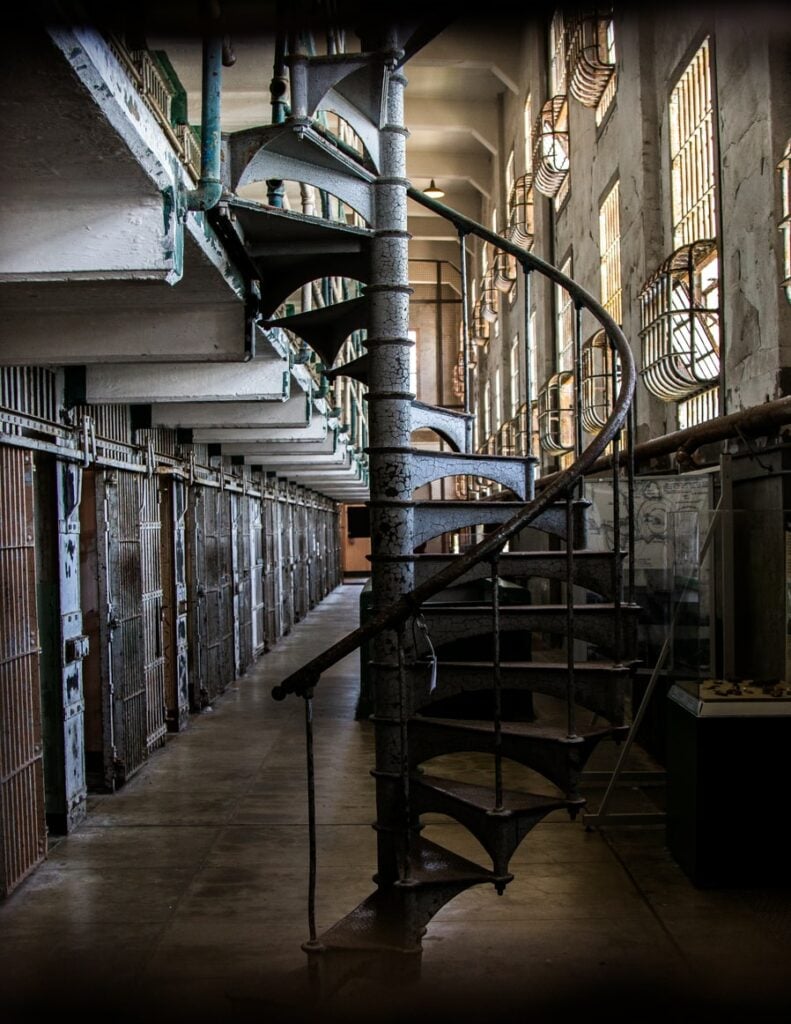 Those who argue with the evidence of survival, also point to a floating body that allegedly wore clothing consistent with the apparel worn by Alcatraz convicts was seen by a freighter ship on July 17, 1962…36 days after the escape. San Francisco County Coroner Henry Turkel didn’t agree that it was one of the escapees, as a floating body in the open ocean for more than a month was unlikely, and he went on record to state it could have been Cecil Phillip Herrman, a 34-year-old unemployed baker who jumped from the Golden Gate Bridge five days earlier. But there was no proof and no one could be certain until the body was recovered (there was a conflicting article that stated Herrman’s body had been recovered by the California Highway Patrol). Turkel’s opinion was not in the majority as four of his peers from neighboring counties believed it was entirely possible for the body seen floating had been one of the escapees. The body was never recovered and it remains a mystery and point of great debate. On February 17, 1964, a partial skeleton of a male in his 30s washed ashore on a beach near Point Reyes, north of the Golden Gate Bridge. DNA tests later proved the bones didn’t belong to any of the escapees. There were also objects from the convicts found floating in the bay. Search parties located a paddle later confirmed as being identical to one found on the top of the cellblock, and two of the three life jackets were found… the first on a beach north of the Golden Gate Bridge and the second only 50 yards off the shore of Alcatraz. These findings only fueled the theories the escapees had drowned. The lifejacket found near Alcatraz had teeth marks embedded deep into the stem that had been used to inflate the vest. West later indicated they couldn’t find anything effective to seal it, so they used binder clamps and larger clips to hold pressure once inflated. Officials believed that once these were bearing weight, the clamps would have come off and the teeth marks likely represented a struggle to hold the seal for survival. Even still, none of the bodies were ever recovered. Both the FBI and US Marshal Service investigated leads from Coast to Coast and beyond. Each promising lead always came up empty.
Those who argue with the evidence of survival, also point to a floating body that allegedly wore clothing consistent with the apparel worn by Alcatraz convicts was seen by a freighter ship on July 17, 1962…36 days after the escape. San Francisco County Coroner Henry Turkel didn’t agree that it was one of the escapees, as a floating body in the open ocean for more than a month was unlikely, and he went on record to state it could have been Cecil Phillip Herrman, a 34-year-old unemployed baker who jumped from the Golden Gate Bridge five days earlier. But there was no proof and no one could be certain until the body was recovered (there was a conflicting article that stated Herrman’s body had been recovered by the California Highway Patrol). Turkel’s opinion was not in the majority as four of his peers from neighboring counties believed it was entirely possible for the body seen floating had been one of the escapees. The body was never recovered and it remains a mystery and point of great debate. On February 17, 1964, a partial skeleton of a male in his 30s washed ashore on a beach near Point Reyes, north of the Golden Gate Bridge. DNA tests later proved the bones didn’t belong to any of the escapees. There were also objects from the convicts found floating in the bay. Search parties located a paddle later confirmed as being identical to one found on the top of the cellblock, and two of the three life jackets were found… the first on a beach north of the Golden Gate Bridge and the second only 50 yards off the shore of Alcatraz. These findings only fueled the theories the escapees had drowned. The lifejacket found near Alcatraz had teeth marks embedded deep into the stem that had been used to inflate the vest. West later indicated they couldn’t find anything effective to seal it, so they used binder clamps and larger clips to hold pressure once inflated. Officials believed that once these were bearing weight, the clamps would have come off and the teeth marks likely represented a struggle to hold the seal for survival. Even still, none of the bodies were ever recovered. Both the FBI and US Marshal Service investigated leads from Coast to Coast and beyond. Each promising lead always came up empty.
This is the grand mystery, the opposition of evidence. If they made it to land, where is the hard proof they survived? If they died in the bay waters, why didn’t at least one body wash ashore?
If the 1975 photo taken in Brazil are the Anglin Brothers, why can’t any shred of evidence be located in South America by officials? Why would Fred Brizzi approach the family with a photo with individuals that would have been of the same age and physical characteristics? Why would Brizzi lie? Why would the FBI lie? If they survived and had children, why can’t they be located? Did they own property? If they survived, then what happened to Frank Morris? If the photo is a fake, then why hasn’t anyone come forward providing the identities of the men in the photo? If they covered their tracks of the escape so well, wouldn’t it seem reasonable they stayed a few steps ahead of authorities? If DNA tests later provided that the bones found near Point Reyes didn’t belong to the escapees, then who do they belong to?
What do you think? Do you believe they survived? That they did make it to freedom, but the real mystery is for how long? Maybe someday we’ll learn the truth. Michael Esslinger is the co-author of Escaping Alcatraz: The Untold Story of the Greatest Prison Break in American History. It is also the winning title of the 2018 International Book Award in the True Crime category.


